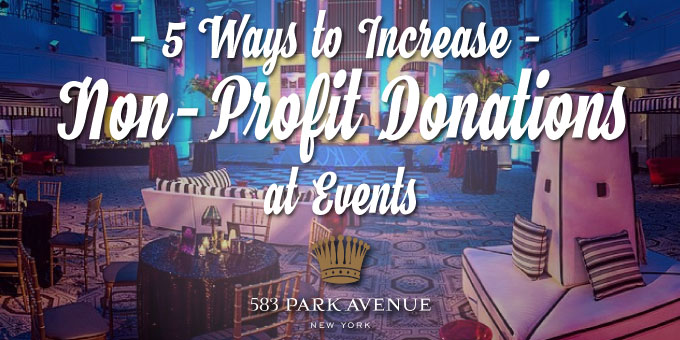
Events are one of the tried-and-true methods of fundraising for non-profit organizations, but not all events are created equal. Below are five ways a non-profit organization can maximize the amount of donations from the events they hold.
1. Launch a Campaign, Not Just an Event
The impact of any one event can be enhanced by including it as the culmination of a larger campaign. Traditionally many non-profits hold their once a year gala, and conduct other fundraising initiatives throughout the year. However, science tells us there is a benefit to leveraging an extended time period to communicate key messages.
Our brains are complex, and memory function is a key component. How our brains process experiences and commit them to memory plays into why fundraising campaigns (i.e., multiple communications and events around a common theme and goal) outperform singular events.
As Ashish Ranpura writes:
Scientists divide memory into categories based on the amount of time the memory lasts…
Each type of memory is tied to a particular type of brain function. Long-term memory, the class that we are most familiar with, is used to store facts, observations, and the stories of our lives. Working memory is used to hold the same kind of information for a much shorter amount of time, often just long enough for the information to be useful; for instance, working memory might hold the page number of a magazine article just long enough for you to turn to that page. Immediate memory is typically so short-lived that we don’t even think of it as memory; the brain uses immediate memory as a collecting bin, so that, for instance, when your eyes jump from point to point across a scene the individual snapshots are collected together into what seems like a smooth panorama.
Converting an experience from a working memory to a long-term memory requires time and exposure—things a campaign offers. A memorable campaign creates repeat exposure, increasing the likelihood your target has processed the importance of your message. Using an event as the culmination of a campaign, rather than a one-off, can then boost loyalty and increase donations since attendees already comprehend your organization’s message.
2. Hold Multiple Events
While many non-profits may hold one large fundraising event a year, some are finding that more events, done well, mean more money. Just like adding an extra direct mail piece or other communication can often create another opportunity to solicit donations, multiple strategic events can also help.
Traditionally the challenge with multiple events is concern over tiring your donor base. If you consider adding another large event to your fundraising strategy, add it during a different season than your traditional event. Or, hold a smaller event targeted to a different stakeholder audience. Either way, managing multiple events may add a bit of communication complexity, but often the additional revenue opportunities make it more than worth it.
3. Offer Real Time Gamification of Donations
Fundraising events with donations dynamically displayed on-screen creates an exciting moment of giving that propels more donations. On average conference donations have 38 percent attendee participation.
Consider amplifying that number with mobile pledging. Have a speaker walk your audience step-by-step through the process and display the results on a screen visible to your whole audience (maybe in a fundraising thermometer). This real-time fundraising “game” brings an added ego boost to donors while potentially driving donations through the roof.
4. Empower Your Team to Create Relationships
Feelings, not analytical thinking, powers donations. Often the reason donors fail to give is because they do not feel connected to an organization. That connection can come in many forms, but often is to the very people working on behalf of the organization. Crucial to maximizing donations at events is training your staff on how to interact with donors to create that personal connection.
In Michelle Tillis Lederman’s book The 11 Laws of Likability she recommends always being your authentic self. For many fundraisers this is a challenge because they want to impress their donors. Consider suggesting your staff do the following four things to create a better personal connection with donors:
- Talk about why they are passionate about the cause
- Discuss how they became involved with the organization
- Relate some of the stories of the people the organization impacts
- Ask donors about non-issue related points of commonality
5. Say Thank You for More Money
Did you know:
Seventy-three percent of first-time donors never give again because they don’t feel a part of the organization, they don’t feel appreciated—often they don’t even get a thank-you note—so they leave.
If you haven’t already, consider implementing a thank-you program. A proper thank-you program can improve donor retention by 50 percent. Our physiological response to appreciation induces feel-good hormones like norepinephrine. The flow of such dopamine chemicals can help people remember your nonprofit favorably.
Fundraising event campaigns provide your audience more time to process, connect, and donate. By giving your team more time to send out emotionally-compelling thank-yous and invite people to come back and learn more, you can maximize fundraising success.
Interested in hosting a fundraising event at 583 PARK AVENUE? Contact us for more information.







